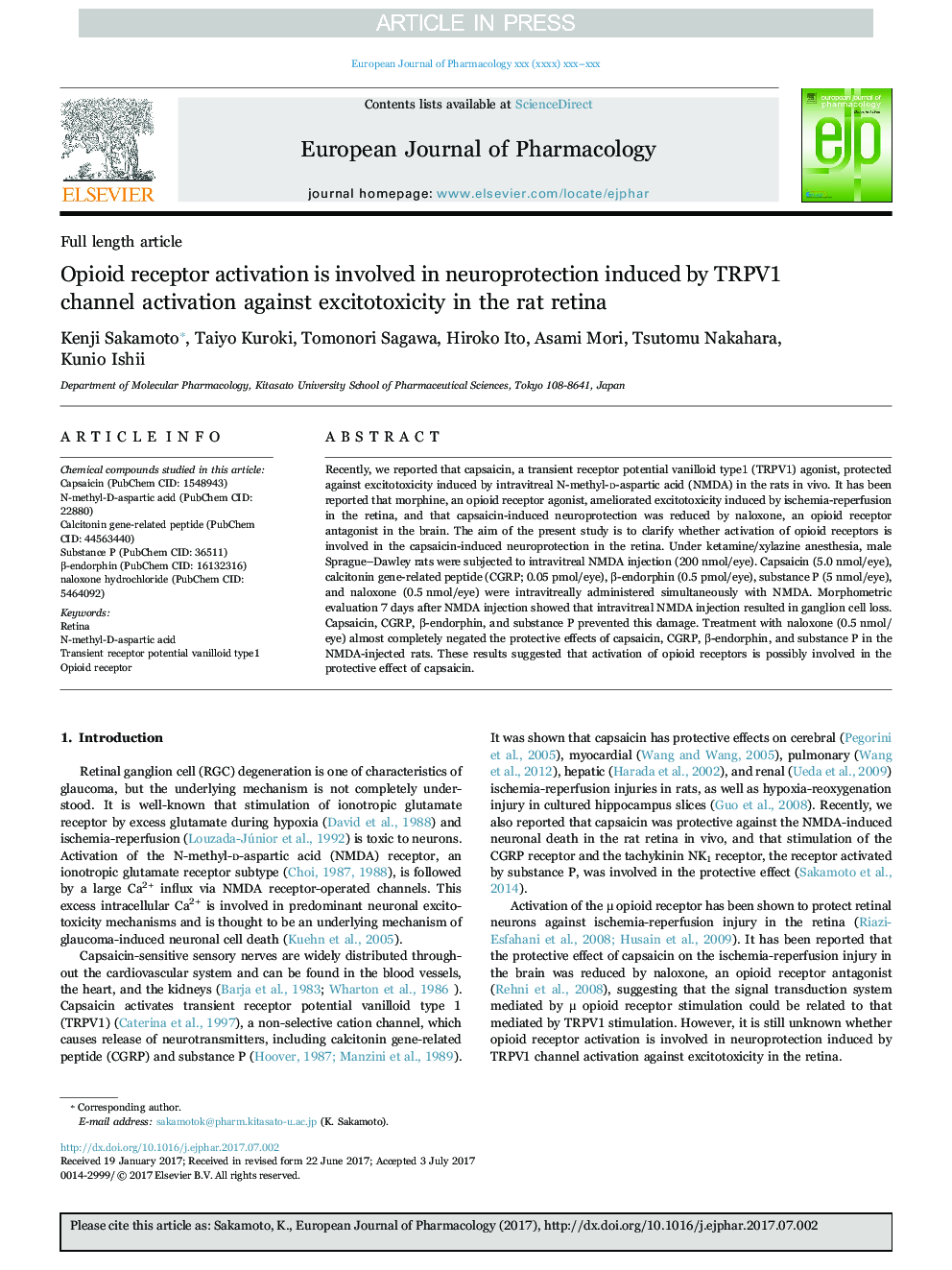| Article ID | Journal | Published Year | Pages | File Type |
|---|---|---|---|---|
| 5554409 | European Journal of Pharmacology | 2017 | 7 Pages |
Abstract
Recently, we reported that capsaicin, a transient receptor potential vanilloid type1 (TRPV1) agonist, protected against excitotoxicity induced by intravitreal N-methyl-D-aspartic acid (NMDA) in the rats in vivo. It has been reported that morphine, an opioid receptor agonist, ameliorated excitotoxicity induced by ischemia-reperfusion in the retina, and that capsaicin-induced neuroprotection was reduced by naloxone, an opioid receptor antagonist in the brain. The aim of the present study is to clarify whether activation of opioid receptors is involved in the capsaicin-induced neuroprotection in the retina. Under ketamine/xylazine anesthesia, male Sprague-Dawley rats were subjected to intravitreal NMDA injection (200 nmol/eye). Capsaicin (5.0 nmol/eye), calcitonin gene-related peptide (CGRP; 0.05 pmol/eye), β-endorphin (0.5 pmol/eye), substance P (5 nmol/eye), and naloxone (0.5 nmol/eye) were intravitreally administered simultaneously with NMDA. Morphometric evaluation 7 days after NMDA injection showed that intravitreal NMDA injection resulted in ganglion cell loss. Capsaicin, CGRP, β-endorphin, and substance P prevented this damage. Treatment with naloxone (0.5 nmol/eye) almost completely negated the protective effects of capsaicin, CGRP, β-endorphin, and substance P in the NMDA-injected rats. These results suggested that activation of opioid receptors is possibly involved in the protective effect of capsaicin.
Keywords
Related Topics
Life Sciences
Neuroscience
Cellular and Molecular Neuroscience
Authors
Kenji Sakamoto, Taiyo Kuroki, Tomonori Sagawa, Hiroko Ito, Asami Mori, Tsutomu Nakahara, Kunio Ishii,
